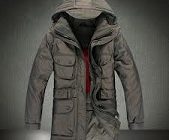Looking for the German pith helmet? Read more and discover the facts behind the use of the safari helmet or German pith helmet…
The German Pith helmet is also known as the sun hat or the safari helmet. It is utilized across the world today to offer protection to people in the sun. It is best described as a cloth covered helmet made of lightweight materials. This material is usually cork or pith, hence the name. The pith usually came from the Aeschynomene aspera which grows profusely in India.
Purpose of the Pith Helmet
The main use of this helmet is to protect the head and face of the wearer from the harsh rays of the sun. However, the German pith helmets were regularly used by the Westerners located in the tropics. There were many rough style pith helmets available as far back as the 1840s. However, by 1870 the pith helmet was associated with the European military personnel.
Evolution of the German Pith Helmet
The pith helmet was especially prevalent in the European tropical colonies and historically evident in the Franco-Prussian War. During this war the German Pickelhaube became very popular and actually went on to influence the unique design of the classic pith helmet.
It is often thought that the development was also merged with the designs available for traditional helmets in the Philippines. This helmet was known as the Salakot. The alternative name for it was salacot and it can be seen in the Spanish language as well as the French dialect . Even the Philippines military used the Spanish pith helmet side by side with the native straw hat.
Description of the Helmet
The original hat is crafted out of pith. It was covered with small bills on the front and back. Generally it was covered by a strip of white cloth or a thick cloth band known as the ‘puggaree’ in traditional India. It had small round holes for ventilation purposes throughout the surface.
In the military version of the pith helmet you could see the metal insignia fixed on the front. It would generally have a ball shaped finial or a brass spike. The chinstrap of the pith helmet was of two kinds; either leather or brass depending on the occasion. The base material was finally altered and instead of the pith, cork was utilized as it was more durable. Even then it was covered with cloth and still called the pith helmet. These helmets were used regularly during World War I and World War II.
In order to create a camouflage look the pit helmet was dyed with mud, tea, or other materials to lighten its color and blend in with the environment. For those involved in tropical service the white color was finally replaced with khaki.
It was used during World War I by the entire range of allies and colonial troops. These included the German colonial troops that fought in Middle East and Africa as well as the Turkish, French and Belgian troops and military men of the British Empire. In fact, as late as World War II the style of this helmet was used profusely even though the material was changed. The Japanese used it in World War II and the American and European personnel that were deployed in hot climates started using a similar construction with ventilation holes. Perhaps the most famous tropical unit deployed by Germany was the German Afrika Korps which had to utilize the German pit helmet in the hot weather.




